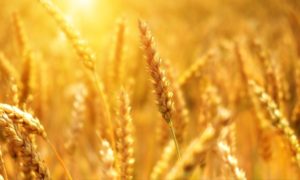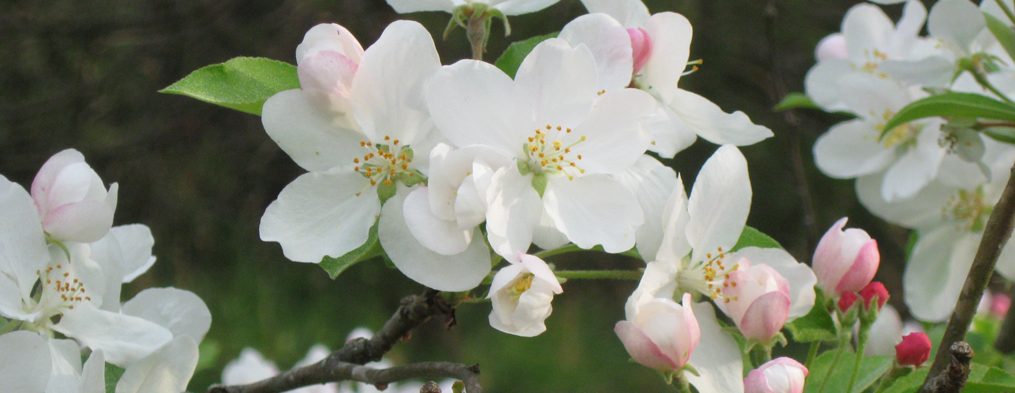 We are in the season of Lughnasadh, also known as Lammas. This is the first of three harvest festivals. This one focuses on what we call the “first fruits”, those fruits, vegetables and grains ripening early in the season. The other two are Mabon and Samhain, one celebrating the harvest of the last crops and the next that of the herd animals sacrificed to feed the tribes.
We are in the season of Lughnasadh, also known as Lammas. This is the first of three harvest festivals. This one focuses on what we call the “first fruits”, those fruits, vegetables and grains ripening early in the season. The other two are Mabon and Samhain, one celebrating the harvest of the last crops and the next that of the herd animals sacrificed to feed the tribes.
In the many myths about this festival there is a consistent theme, that of sacrifice. To see the abundance of our harvest, it is important that we also honor the sacrifice made to assure it. Typically, the stories are of the great feats of Lugh is association with this special season. Lugh, the great hero of the Celts, was the child of Cian of the Tuatha Dé Danann and Ethniu of the Fomorians. The union of these two forged an alliance of two tribes. He was given in fosterage to Tailtiu, Queen of the Fir Bolg, wife of Eochaid mac Eirc, the last of the Fir Bolg Kings, further deepening this alliance. Lugh’s story is about birth and transformation. He is a powerful archetype who achieves his greatest gifts through adversity.
There is some confusion in these Celtic stories for we find different versions that often conflict with each other. One version is that Eochaid, King of the Fir Bolg created a great festival in honor of his queen, Tailtiu. Other stories say that Lugh created the festival in her honor of his foster mother when she died. However it began, this festival has been celebrated for a very long time and still is, in many places.
So who was Tailtiu? Tailtiu, the last queen of the Fir Bolg, died from exhaustion after clearing a great forest so that the land could be cultivated. Without land on which to grow food, her people would perish. When all gathered at her death-bed, she told them to hold funeral games in her honor. She prophesied that for as long as they celebrated in this way, Ireland would not be without song. Her name comes from the old Celtic Talantiu, “The Great One of the Earth.”
From this we believe she may originally have been a personification of the Land itself. There was a time when Lughnasadh had an older name, Brón Trogain, which refers to the painful labor of childbirth. From this we might see that at this time of year, the Earth births her First Fruits in order for us to live.
The people of early Ireland held the festival at Teltown in County Meath (its name derived from Tailtiu). Over time it became a great tribal assembly conducting all the business of the tribe. There they made legal agreements and had discussions about political issues. It was also a time for handfastings, as well as large sporting events with races of all kinds. As with all “faires”, many kinds of things were bought and sold. There was storytelling, music, and much revelry.
The origins of this festival seem to have two origins. First is Tailtiu who died from exhaustion after clearing a great forest so that the land could be cultivated and, second we have Brón Trogain, which refers to the painful labor of childbirth; both great sacrifices. Sacrifice does not come without pain. Brón Trogain was also the name for the month of August and means, the “month of sorrow.” We can associate this sorrow with the death or subduing of the land-spirits and the sadness felt by tribe over the fact that the plants they have birthed and nourished must now be cut down. All must die for the harvest to be won. This was a gift freely given. She cleared the land for the crops and gifted them to her foster son and the tribe. IN either case, the origins point to the sacrifice of mothers – the laboring and birthing as well as the nurturing.
As women we are aware of the meaning of sacrifice. Those desires and dreams we release in order to birth and raise our children; personal sacrifices we give to another for love; the time spent working while raising a family; the work and sacrifice necessary for maintaining a home as keepers of the hearth; the pain and sorrow of our progeny’s (all of our creative endeavors) failures and losses, not our own, but felt through our connections as creators.
Many years ago, a group invited me to priestess for a rite at Lughnasadh. I felt ill prepared as I had not yet found a way to identify with this festival, so often masculine in nature. I decided to take myself into a trance and see if I could journey to an earlier time when this festival was honored. I don’t know where I went. Where is much less important that what I saw and felt.
I was standing next to a large field of golden grain which was moving in waves at the urging of the wind. I was holding a tall scythe in my right hand and I was gazing out over this field. I could feel the hot sun behind me and an equal warmth in my heart as it filled with pride at the beauty of this fine harvest before me. I was proud of the work I had done and yet felt even more was the gratitude for the rich soil, the frequency of rain and the energy of the glorious sun shining down, the energy of the Mother, giving life to this crop which I am about to sacrifice, in all its bounty, so that I might live yet another year.
Let us enjoy and celebrate our early harvest, the bounteous gifts we have received, for the sacrifices we and others have made. Let us give thanks for this bounty. Let us dance and make merry that the fruits of our labor have manifested in this joy. Let us offer grateful hearts for all the sacrifices made each day. Let us honor those we have made, those of our mothers, fathers, friends and family and finally, by our plant and animal kin who have given us the gift of life. Let us honor all those who clear the fields from which our crops are harvested.

